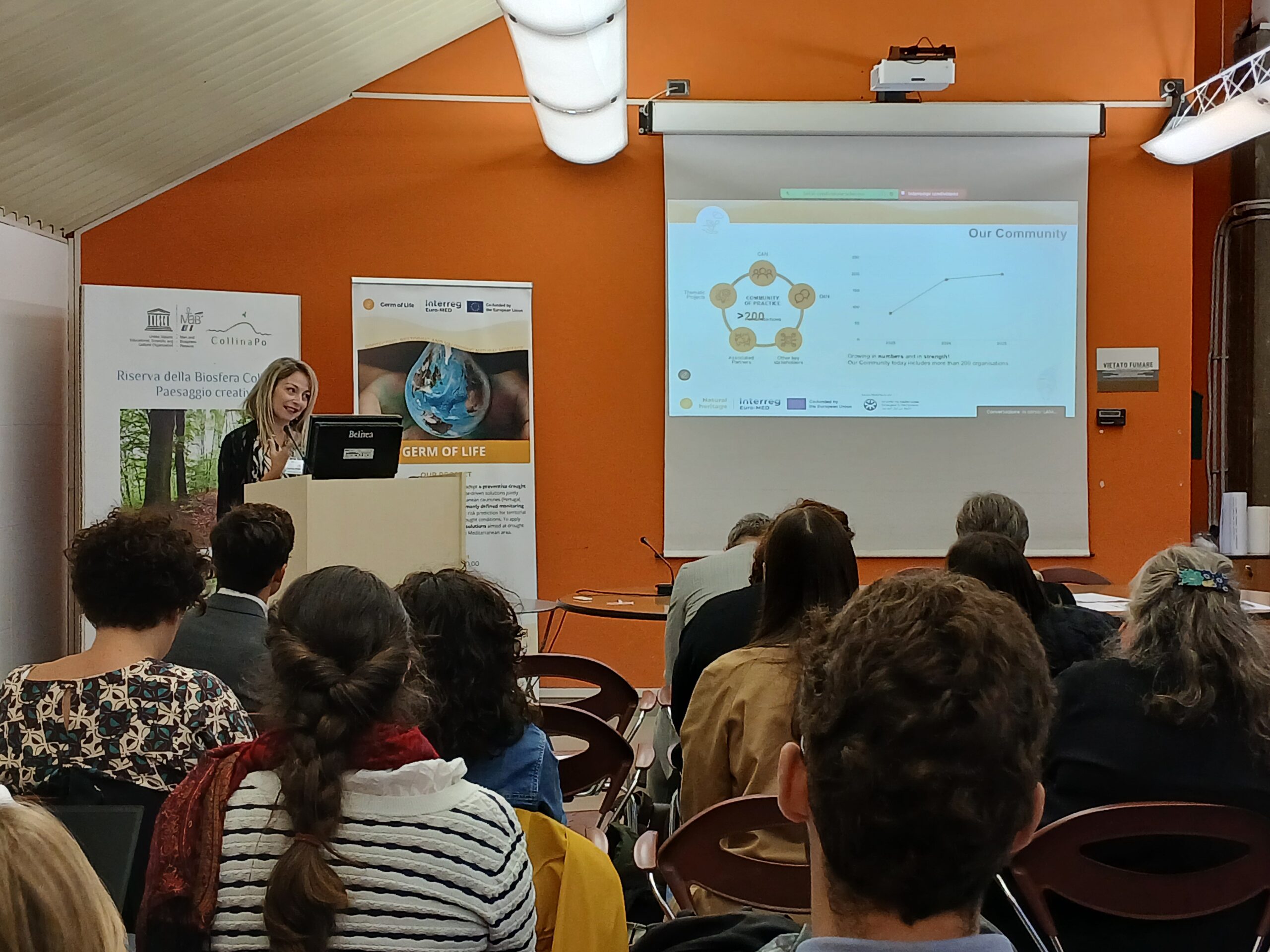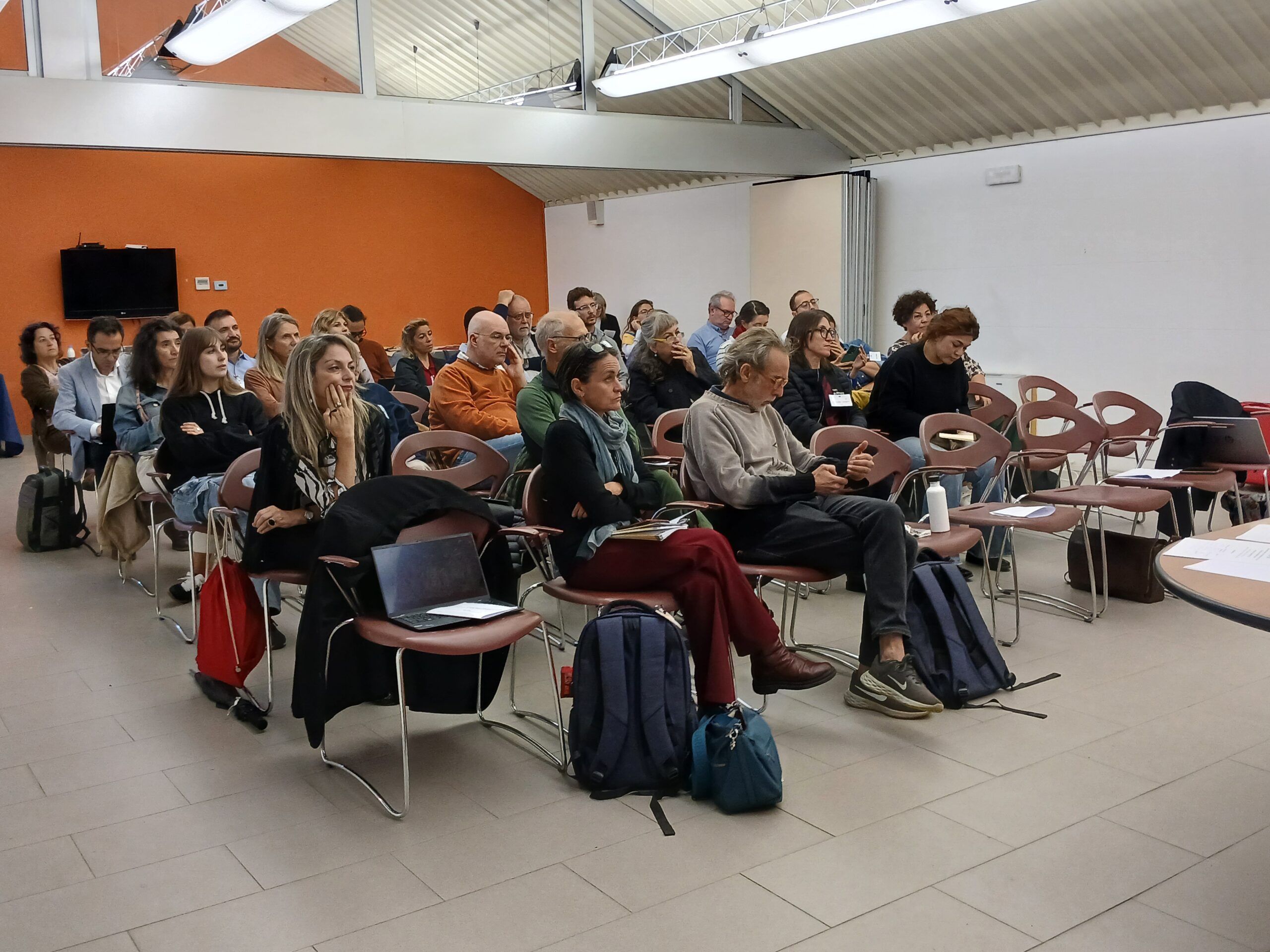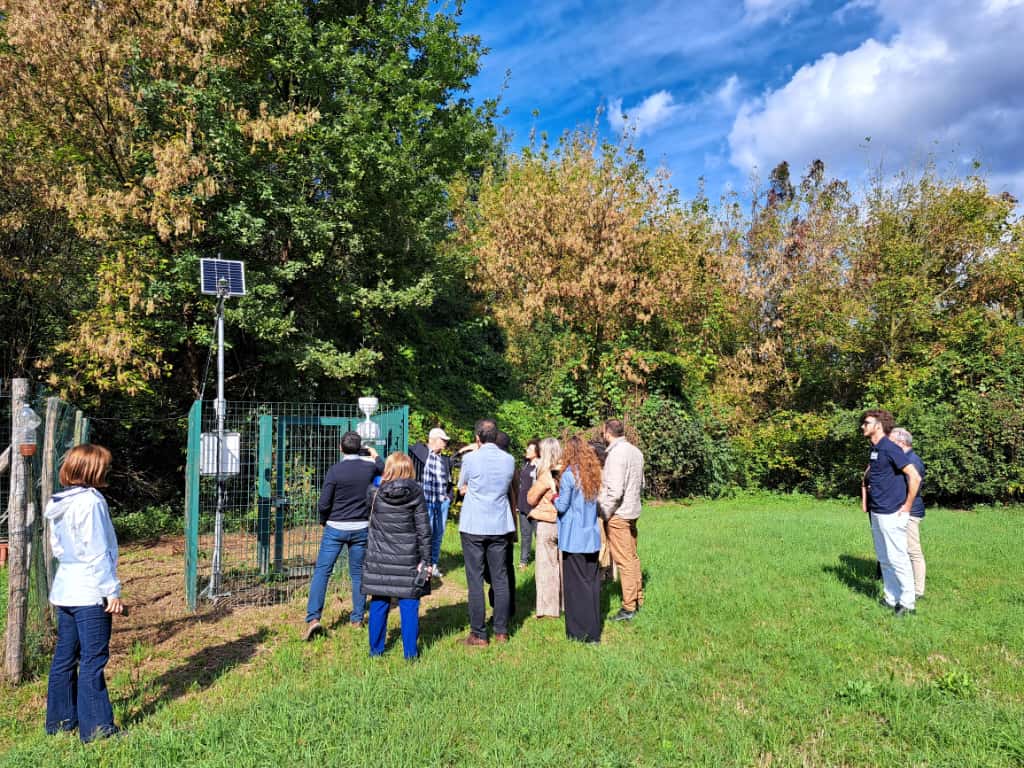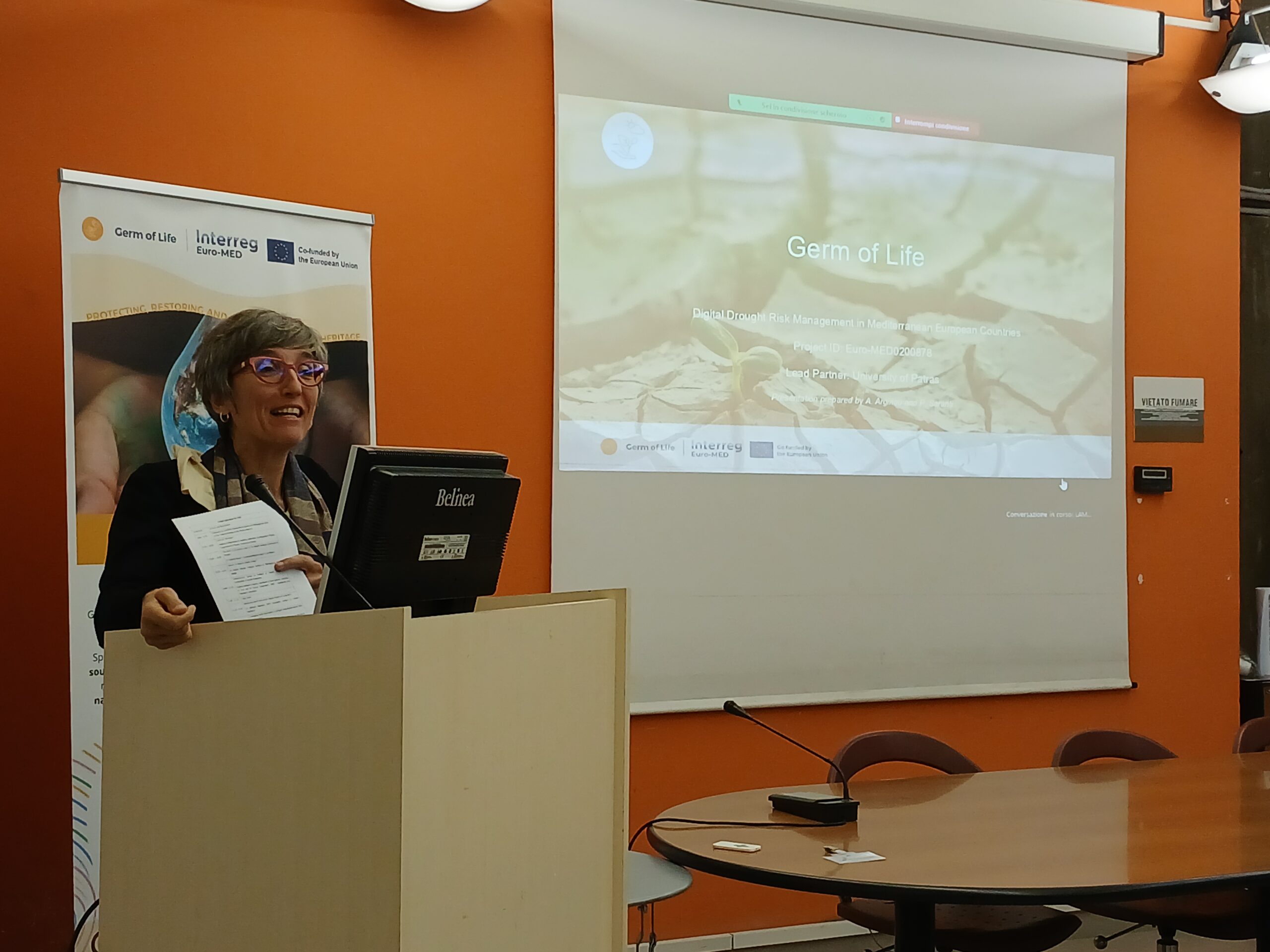The fourth in-person working meeting of the Germ of Life project partners also featured an interesting workshop on “Water and Ecosystems in the Mediterranean: Climate Challenges and Adaptive Responses” with the participation of leading researchers and stakeholders, in the beautiful setting of Cascina Le Vallere (Moncalieri, Italy).
This workshop, conducted within the framework of the Germ of Life project, focused on advancing innovative solutions for drought prevention and mitigation across Euro-Mediterranean countries, bringing together researchers, stakeholders, and practitioners to share knowledge and strengthen collaboration.
The hosts were Lamoro Development Agency, Germ of Life partner, and the Management Body of the Protected Areas of the Piedmontese Po. Initially, the event featured Sonia Abluton of Lamoro and Emanuela Sarzotti, director of the Management Body of the Protected Area of the Piedmontese Po.
Athanassios A. Argiriou, Germ of Life Project Leader, from University of Patras (Greece), explained to the workshop participants the key aspects of what the project supported by Interreg Euro-MED is structuring and addressing.
Caterina Praticò, Community4Nature project’s coordinator, shared what the Natural Heritage Community of Practice, of which Germ of Life is a part, is all about.

Advances in research and knowledge on how to measure climate change were raised by Andrea Merlone, researcher at the National Institute of Metrological Research (INRIM). In this entity he directs research in the fields of Applied Thermodynamics and Applied Metrology and Engineering Division.
Andrea Merlone is highly involved internationally. He holds responsibilities, for example, as Co-Chair of the Task Group “Air Temperature” of the Comité Consultatif de Thermométrie at the Comité International des Poids et Mesures (International Committee for Weight and Measurement). He is also Chairman of the Expert Team on Measurement Uncertainties of the World Meteorological Organization. He is also Co-Chair of the International Surface Temperature Initiative, an international organization with IPCC members for research and analysis of temperature data for climatology.
He clearly explained how investing in a Climatological and Metrology Reference Station: benefits outweigh the costs:
-A climatological station can be installed at reasonable costs (<50 k€).
-The value of generating high quality data surpasses the implementation and management costs.
-Real time data is of utmost importance, also for early warning.
-Accurate measurements are also fundamental to understand mitigation plans efficacy.
-The station can be part of a larger network and used as test-site.
-It can be associated to programs of citizen’s science (as a reference for «amateur» observations).
Manuela Lasagna, professor and researcher at the Department of Earth Sciences, University of Turin, and Simone Ciadamidaro, from ENEA – Biodiversity and Ecosystems Laboratory, presented their project SentinelSprings: Springs as Sentinels of Climate Change and Sustainability of Aquatic Ecosystems, a project funded under the Water4All 2023 joint transnational call on “Aquatic Ecosystem Services”.
Springs represent a critical interface between groundwater and surface ecosystems, playing a key role in sustaining biodiversity, yet they remain largely underrepresented in European water management policies.
Within SentinelSprings, the Italian team focuses on lowland springs (risorgive and fontanili) of the Piedmont Po Plain (Turin and Vercelli), which are particularly vulnerable to climate change and anthropogenic pressures.
This multidisciplinary approach integrates:
-Hydrogeological monitoring (spring discharge, groundwater level, water quality).
-Ecological indicators (macroinvertebrate assemblages, aquatic vegetation).
The goal is to identify early warning signals of environmental stress and contribute to a harmonised European framework for spring assessment.
This collaborative effort will provide valuable data for adaptive water management and the protection of these often-overlooked yet ecologically vital ecosystems.

The CMCC Foundation is one of Germ of Life’s partners, a leading research institution focused on challenges such as climate resilience. In this workshop, Manuela Balzarolo presented monitoring natural and human-induced impacts on ecosystems. Mattia Scalas presented leveraging earth observations to mitigate heat-related health risks, applied to the Germ of Life pilot project in the Turin metropolitan area, in Le Vallere Park.
Manuela explained the “land sink” process: how terrestrial ecosystems absorb and store more CO₂ from the atmosphere than they release, acting as a natural climate regulator. This process, however, can be altered by climate-related stressors. Another key topic was phenology, the study of cyclic and seasonal natural phenomena. She emphasized the variability of growing seasons and presented data from 1982 to 2000, followed by insights into forest greening trends and future projections.
She also introduced the SDGs-EYES research project, which aims to develop common indicators for monitoring SDGs using Copernicus data. The project focuses on seven SDG indicators related to the environment to improve their reliability, robustness, and accuracy.
Christian Ronchi is a reference in the natural and environmental aspects of the Piemonte Region, internally at Arpa Piemonte. At the Germ of Life workshop he presented data on extreme drought events in northwestern Italy: a climate assessment and the development of a synthetic drought index.
Ronchi is environmental manager of the Regional Agency for Environmental Protection Main duties and responsibilities: Head of the Piedmont Regional Functional Center within the national Civil Protection system. With responsibilities for assessing the alert level for hydrogeological risk and managing critical issues.
The Hydrology and Water Quality Unit is responsible for the following activities, among others:
• Hydrological and hydraulic assessments.
• Meteorological and hydrographic monitoring, groundwater and surface water quality.
• Production of services for the early warning system for civil defense purposes.
• Production of indicators for the quantitative status of water resources.

Alberto Peracino, from Gran Paradiso National Park, participated in the workshop with his presentation ‘From ice to water: results from 26 years of mass balance measurements on the Grand Etrèt Glacier in the Gran Paradiso National Park’.
The workshop concluded with a guided tour to explain the characteristics of Le Vallere Park, the area selected for the Italian pilot, one of four in the Germ of Life pilot phase (the others are in Greece, Portugal, and Spain). Everyone saw the technical resources of the pilot facility, which has the following features:
-Thermo-hygrometric sensor.
-Tipping-bucket rain gauge for automatic rainfall measurement.
-TDR sensor for measuring soil moisture, electrical conductivity, dielectric permittivity, and temperature.
-PAR sensor for measuring photosynthetically active radiation.
-Analog NDVI sensor for measuring both reflected and direct light.


